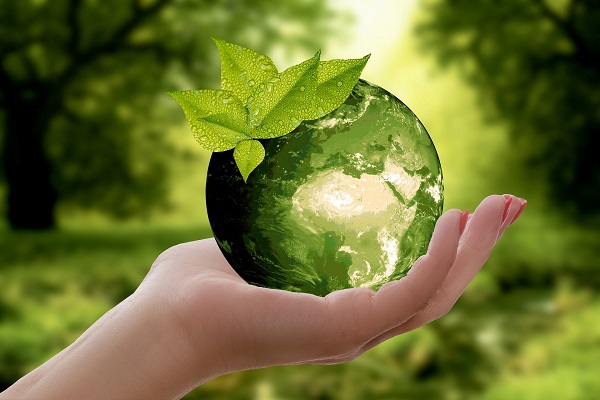
What is Sustainability?
The actual concept of “sustainability,” or “Nachhaltigkeit” in German, can be traced back to Hans Carl von Carlowitz (1645–1714), who managed mining on behalf of the Saxon court in Freiberg. It was during his time that he formulated ideas for the “sustainable use” of the forest as the timber shortage had great impact on the mining industries. His planned reforestation projects in early times became an important guiding principle of modern forestry. Fast forward to 1987, when the U.N.-commissioned study known as the Brundtland Report defined sustainability as actions that meet “the needs of the present without compromising the ability of future generations to meet their own needs.” 2 It wasn’t until the mid-1990s that John Elkington coined the term “triple bottom line” to clarify sustainability as the integration of social, economic and environmental value. 2 So realistically, sustainability is far from a new concept, it just has not always been practiced.
The Convergence of Food and Agriculture Sustainability
For those of us who are multi-generation farmers or farm owners, we would say agriculture has always been about sustainability. For most, it’s the goal to pass farms from one generation to another in such a way that maintains productivity. Adoption of soil conversation practices, use of new technologies and the inherent value of land preservation have been the foundation for maintaining sustainable farmland. However, looking back over the years, sustainability was engrained in most farmers and appreciated by their neighbors but not necessarily defined or required to be defined by consumers or food companies. Along the way, the disconnect widened between food and agriculture, whether by choice or chance.
With the continued growth of a global population, the continued rise of chronic disease, hunger and poverty, along with climate change indicators identified, the global explosion of sustainability reached its tipping point during the 2010 Food and Agriculture Organization (FAO) of the United Nations Scientific Symposium on Biodiversity and Sustainable Diets. Perhaps it was the statement by Tim Lang with the Center of Food Policy at the City University in London that provided the framework for the convergence or reunification of food and agriculture. Lang stated, “What is a good diet in the 21st century? Nutrition science tried throughout the 20th century to clarify what is a good diet for human health. But today it has little or nothing to stay so far about how to marry human and eco-systems health. Here lies a major 21st century food policy challenge.” 3
In January 2016, 17 Sustainable Development Goals (SDGs) of the 2030 Agenda for Sustainable Development, as adopted by world leaders at the U.N. Summit in September 2015, officially came into being. The goal is that over a 15-year period, countries will mobilize efforts to ultimately “end all forms of poverty, fight inequalities and tackle climate change, while ensuring that no one is left behind.” 4 Goal 2 “Zero Hunger” focuses on ending hunger and improving food security, nutrition and sustainable agriculture. The SDGs serve as the blueprint for today’s sustainability focus by food and agriculture companies and organizations. Sustainability is taken seriously by the food value chain. Food production practices such as land and water management, reduction of food waste from farm to retail, and reduction of the carbon footprint of a product through life cycle assessments (LCA) are virtually universally accepted.
What About Our Goals?
When making food purchasing decisions, sustainability seems to be an increased focus for many of us but interpretation of the term varies. In the 2018 IFIC Foundation Food & Health Survey, a majority of consumers – 59 percent – stated sustainability was important and identified important aspects of it as reduction of pesticides, affordable food supply and conservation of natural habitats. Production efficiencies and food waste were identified by less than 10 percent. 5

A recent Academy of Nutrition & Dietetics questionnaire asked its members about the common questions consumers have about sustainability. Responses ranged from questions about eating local and seasonal products, the differences between conventional and organic products, whether to avoid plastic packaging, how to read food labels, how to limit food waste and the pros and cons of a plant-based versus animal-source based diet. All good questions, but the range of responses again reveals that what one person deems as a sustainable food or agriculture practice may not be in line with others.
The Bottom Line
When it comes to determining what a sustainable food or agriculture system is, I think we can all agree it’s not a simple answer. While I believe sustainability is the nexus of the “triple bottom line” – environment, economics and social responsibility – others may not. As consumers we do “vote” with our dollars. Our actions have moved the food and agriculture industries to take sustainability seriously. However, if we truly are committed to a sustainable food system, we have to step up to the plate as well. Here are some questions to consider:
- What are we doing within our communities to ensure food security for all?
- What measures have we implemented within our home, work or community to reduce food waste?
- Buying locally is definitely a good practice but are we willing to limit what we eat or reduce our daily intake of staples…like coffee?
- Are we willing to buy fresh produce only seasonally (similar to my childhood), forgoing fresh tomatoes or berries from across the country or out of the country for months at time?
- Are we serious about our own food waste, buying what we will eat or freezing extras for future meals?
- Are we willing to accept new food and agricultural technologies that reduce land and water use without compromising production?
Perhaps sustainability is best summarized in a 2016 Huffington Post article by Lance Hosey (an architect), “Sustainability isn’t a trend, it’s an ethic, and it can never become unfashionable, even if its language does. The challenge for those of us who champion the idea is to continue to find new ways—and new words—to inspire change.” 1
“In the end,” observed Baba Dioum in 1968, “we will conserve only what we love, we will love only what we understand, and we will understand only what we are taught.” 1
Footnotes
1. A Brief History Of ‘Sustainability,’ Huff Post, January 9, 2016 (updated December 6, 2017)
2. Hans Carl von Carlowitz and “Sustainability,” Environmental & Society Portal
3. Proceedings of the International Scientific Symposium. BIODIVERSITY AND SUSTAINABLE DIETS UNITED AGAINST HUNGER. 3-5 November 2010 FAO Headquarters, Rome
4. 17 Sustainable Development Goals (SDGs) of the 2030 Agenda for Sustainable Development
5. 2018 IFIC Foundation Food and Health Survey
6. 2019 IFIC Foundation Food and Health Survey
